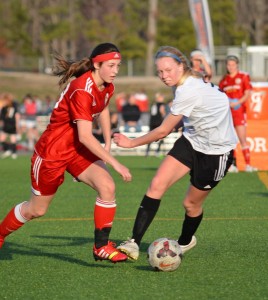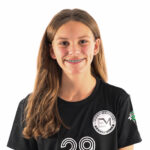Dure: Youth soccer’s vanishing middle class
 The one saving grace of the spring calendar in the USA: We all get our taxes done before travel tryouts. Can you imagine the combined stress of both of those at the same time?
The one saving grace of the spring calendar in the USA: We all get our taxes done before travel tryouts. Can you imagine the combined stress of both of those at the same time?
And in both cases, you may ask: Is this the fairest way to do this? And a related question: Is the middle class being squeezed?
We’ll leave the tax questions to your favorite political sites. But in travel soccer, the answer is absolutely “yes.”
+READ: Dure – Brainstorming a coaching curriculum for parent coaches
The truly elite players have their own issues, trying to find the right fit to nurture their prodigious talents. Then you have another group of players who will comfortably make a travel team at any large club — they may grumble about being on Red or Green or Magenta instead of White or Black or Puce, but their needs will be met.
It’s the large group of borderline kids who have the biggest reasons to fret. And we have two reasons for that stress:
1. We’ve devalued recreational leagues. That’s one of the concerns raised in the Project Play report:
The flight to travel (and to for-profit club) teams thins rosters and the number of teams that can be created. The kids left behind can get the message that they’re not good enough, and start checking out of sports.
 By the end of grade school, in some areas, in-town leagues in sports like soccer and basketball have lost enough participants that they are no longer viable.
By the end of grade school, in some areas, in-town leagues in sports like soccer and basketball have lost enough participants that they are no longer viable.
2. Kids who don’t make the cut at age 8 have a tougher time keeping up developmentally. We all hear the stories about kids who don’t make it at U-9 and end up as world-beaters at U-12. That’s encouraging. But then who was developing those kids along the way?
The more kids get siphoned off to travel programs, the more your local House league suffers in terms of development. Instead of having six or seven serious players per team, you get three or four. The games get bogged down. Coaches, usually overworked and underprepared parents, spend much of their time getting kids to line up correctly for a goal kick rather than teaching players to refine their skills.
The demand for a “middle ground” is great. But we’re not meeting that demand. In Northern Virginia, most clubs have an “NCSL or higher” mentality, pushing more and more kids into higher-level travel even if they’re not ready to cope with the competition. At U-9, NCSL has about 50 teams from Northern Virginia. WAGS, the top girls league, has close to 40. The ODSL, which serves that middle ground, is half that size.
That ratio seems backwards, particularly when you account for the handful of elite leagues that take players as well. Instead of a pyramid, we have an hourglass.
+READ: Dure: If you must cut players, consider the options
That’s not good for developing players who may love learning the game, but haven’t yet turned the corner athletically. They need to be challenged to continue their development. They deserve to play in fun games with other players who love the game.
 Thankfully, some clubs have recognized their middle classes. Loudoun Soccer has a “challenge” program for its more serious recreational players. Arlington has a similar internal Developmental Program.
Thankfully, some clubs have recognized their middle classes. Loudoun Soccer has a “challenge” program for its more serious recreational players. Arlington has a similar internal Developmental Program.
Other clubs have programs akin to “part-time” travel. Vienna (my club) extends its “crossover” program for younger ages up through U-9 and U-10 players seeking something on top of their House league. Alexandria offers players who don’t make travel a spot in a Development Program: “No one is ‘cut’ from ASA programming.”
These programs are essential. They help players realize their potential, whether they turn out to be late-bloomers who star in travel as a teen or just good recreational players who love the game for life. And they help clubs keep those late-bloomers on a solid developmental path.
It’s a lot easier to help the middle class in soccer than it is in the U.S. economy. We see the solutions. We just need to embrace them. And maybe we’ll have a lot less stress on the tryout fields and throughout young players’ soccer careers.











